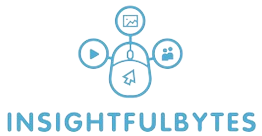The best automations don’t look clever. They feel like one smooth motion that replaces three tiny hassles you repeat all day. On iPhone, iPad, and Mac, Shortcuts lets you chain small steps—open, copy, rename, save, switch a mode—into a single action you can trigger by tapping, speaking, scanning an NFC tag, arriving somewhere, or plugging in. The trick is to ignore flashy demos and build only what you touch constantly. You capture once and file later. You rename in a consistent format so search works. You let sensors and schedules change device modes without nagging prompts. And you make every chain resilient, idempotent, and boring, so it runs the same way every time. Done right, there’s no magic show, just less friction: notes that land in the right place, files that already have the names you’d type, and context switches that happen before you notice you needed them.
Start smaller than you think: one action that replaces three taps

Most people try to build a grand automation and stall. Flip it. Pick a single annoyance you feel every day and design a chain that saves ten seconds reliably. That might be starting a work session where you always open the same note, set a Focus, lower volume, and start a calm sound. In Shortcuts, that becomes a four-step action you pin to your Home Screen or trigger when you arrive at your desk. Or consider your afternoon reset: you always check tomorrow’s first event, paste a meeting link into a reminder, and send one status update. Combine those into a single Shortcut that reads your calendar, builds the reminder with the link already attached, and drafts the status so you only press send. Tiny chains like these earn trust because they never demand decisions. Once they’re steady, you can add a guardrail—if you’re not on Wi-Fi, skip the sound download—or a sensor—if battery is low, dim the screen and enable Low Power first. Reliability comes from strict scope and clear outcomes.
Capture once, file later: an inbox that sorts itself by tag and date
Friction hides in capture. If you hesitate over where a thought belongs, you’ll save nothing. Build a single “Quick Capture” Shortcut you can run from the Home Screen, Share Sheet, Back Tap, or Apple Watch. It grabs whatever you have—typed text, dictated audio, a copied link, or a photo—stamps a date and time, optionally asks for a tag like #idea, #call, or #errand, and appends the entry to a daily Notes page called “Inbox — YYYY-MM-DD.” That’s it. At night, a scheduled Shortcut runs with no prompts. It scans the day’s inbox and files entries by tag: #idea appends to a rolling Ideas note, #call collects under “Calls to Make,” #errand becomes Reminders due tomorrow, #expense saves the image to Files/Finance/YYYY-MM and appends a line to “Expenses — Month.” Notes and Reminders both respect tags and Smart Folders, so you can browse by context without moving anything by hand. The important part is indifference. Capture is always the same gesture; filing is always the same nightly job. Your brain stops negotiating because both actions are frictionless and predictable.
Rename like a librarian: one format that makes every file findable
Automations feel magical when search just works. That almost always comes from filenames. Build a simple “Save and Rename” Shortcut you can call from the Share Sheet in Photos, Files, Mail, or Scanner. It asks for two tiny fields—project or vendor and an amount or brief—then renames the item as YYYY-MM-DD_project_or_vendor_brief.pdf or …jpg and saves it into a predictable folder such as Files/Projects/ACME/Assets or Files/Finance/YYYY-MM. If the name already exists, append -2 instead of overwriting; that idempotent behavior means re-running never hurts. For web pages, have the Shortcut grab the URL, page title, and your highlighted passage, append them to “Reading Log — YYYY-MM,” and save a PDF or Web Archive with the same date-first filename. Consistent, date-first naming sorts well on every device, syncs cleanly, and makes Spotlight or Finder queries trivial. You stop asking “where did that go?” because every file announces its context the same way.
Let sensors set the scene: location, NFC, charger, and time as switches
Great chains run before you think to run them. Use the automations tab to bind small scenes to the triggers your day already provides. When you arrive at work, switch to your Work Focus, lower ringer volume, raise screen brightness to a comfortable floor, open your daily dashboard note, and enable Wi-Fi calling if reception is poor. When you leave, restore your default Focus, resume normal volume, start a playlist, and draft tomorrow’s first task at the top of your notes. Stick a small NFC tag under your desk or on your laptop stand; tapping it can launch your “Start Focus Session” Shortcut, while a second tag on the doorframe runs “Wrap and Lock” that files the day’s inbox, turns off personal notifications, and sets an early alarm if tomorrow’s first event starts before nine. On charger connect at night, queue big photo uploads and app updates; on disconnect in the morning, set a status message and read the day’s first event aloud. Sensors and schedules are quiet teammates. They reduce taps by making your most repeatable transitions automatic.
Turn the Share Sheet into a reliable filing station you trust
The Share Sheet lives where content lives, so it should do your heavy lifting. Build a “Scan to Finance” Shortcut that launches the camera, captures a document, runs OCR, suggests a vendor from recent values, formats the filename, and saves the PDF to Files/Finance/YYYY-MM while appending a summary line to “Expenses — Month” with amount and category. Create “Send to Project” for photos and videos: it resizes or exports in the target format, adds a standard watermark or caption, and files to the current project folder while noting the action in your project log. For links, “Add to Reading” should append title, URL, and a quote to your log, tag it #read, and optionally add the URL to Safari Reading List for offline use. Because the Share Sheet works from every app, these chains survive app churn and platform quirks. Your rules live in Shortcuts, not in a dozen different app menus, so you don’t re-learn filing every time an interface changes.
Build for failure: idempotent steps, tiny logs, and safe prompts
Shortcuts feel fragile when they assume perfect conditions. Design for the real world instead. Before creating today’s note, search for it and append if found. Before saving a file, check if a path exists and add a suffix rather than overwrite. Wrap network actions in a quick test; if offline, write a “Queued Action” line to a lightweight “Automation Log” note that your nightly run can sweep later. Keep a one-line success log at the end of each chain—something like “22:05 Saved 5 items to Finance/2025-09”—so you can verify at a glance that tonight’s job ran. For steps that could surprise, like sending a message or deleting temp files, show a preview and require one tap of confirmation. When you need user input, ask for the smallest possible thing—a tag or short label—so the chain never pauses for a big decision you’re not ready to make. Finally, test pessimistically: empty clipboard, no network, locked screen, duplicate filenames. A minute of mean testing buys months of quiet reliability.
Keep it easy to invoke: phrases, Back Tap, widgets, Watch, and Mac
Speed lives where your thumb already is. Record Siri phrases you’ll actually say—“drop a note,” “scan receipt,” “start focus”—and keep them short and distinct. Put a Small Shortcuts widget with your top three actions on your first Home Screen and a Medium widget with weekly tools on a second page. Map Back Tap so a double tap runs “Quick Capture” and a triple tap runs “Scan to Finance,” letting you file the moment a clerk hands you a receipt. On Apple Watch, make “Voice Inbox” a complication in the top slot so you can lift, dictate, and drop a thought in three seconds. On Mac, keep menu bar shortcuts for “Create Daily Note,” “Start Focus Session,” and “File Clipboard,” and give them hotkeys. This is how chains survive busy weeks: they’re always one gesture away, in the same place, and they never ask you to hunt.
Maintain lightly and protect privacy so the system lasts

A dependable system needs a tiny bit of care. Once a month, sort Shortcuts by Last Modified and prune experiments. Export your keepers to iCloud Drive so you have a known-good backup you can roll back to after an ambitious edit. Skim your Automation Log for failures and slow spots you can simplify. Review any automations that run without asking and confirm you still want them hands-free. In Notes and Files, ensure your nightly filing leaves inboxes nearly empty; if not, tweak your tags or destinations rather than working harder. Keep sensitive flows on device when possible; prefer native Notes, Reminders, Calendar, Files, and Focus actions over third-party webhooks for personal data. When you must call out to the web, sanitize what you send and show a confirmation step. With privacy respected and overhead low, you get automations you can trust to run unsupervised—and that trust is the difference between “nice demo” and “part of my day.”

